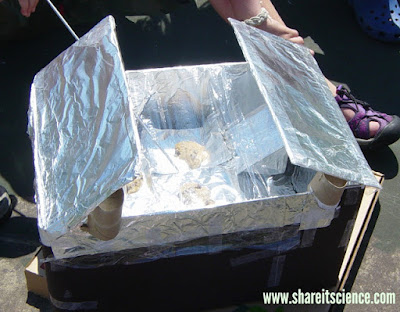Participating in or organizing the "Imagine Your Story" summer 2020 reading program at your local library? You or your patrons will love imagining your own water cycle or rock cycle adventure! Read on to find out how you can teach about the water cycle or rock cycle and access the "Choose Your Own Story" writing template.
This post contains affiliate links, meaning I receive a small commission from purchases made through these links. Please see disclosures for more information. As well as links from Amazon.com you will also find links to Bookshop.org, an online book store that works to support local independent book stores. Shopping through Bookshop links can help you support book stores in your area!
Choose Your Own Adventure
I enjoyed reading books in the "Choose Your Own Adventure" series when I was a kid. After using games and comic strip drawing to teach the water and rock cycles for years I realized that a choose your own type story would also work well.
Although both are cycles and the events happen over and over, rarely do they happen in a neat and tidy way like on a diagram. That is not to say a diagram isn't an excellent tool to show some of how this happens, but it is more realistic to have students imagine and model the myriad of ways a water drop or rock transforms over time.
Teaching the Water Cycle
When I teach the water cycle to elementary students, I use several picture books and activities. If your kids or students are unfamiliar with the water cycle, I'd recommend trying one or all of these before you send them off to create a water cycle "Choose Your Own Story".Read a picture book.
Read Ice Boy by David Ezra Stein. This is a really cute adventure of an ice cube who wants to get more out of life and escapes the freezer to go on an adventure. As he travels he experiences the phase changes of water as he moves along the water cycle.
Another good one is A Drop Around the World by Barbara Shaw McKinney. Beautiful illustrations depict a drop of water as it travels all over the place around the planet: underground, the ocean, in a plant, etc. I find this one to be a great way to illustrate that the water cycle is not just a stationary cycle, it is water moving all over the globe.

You'll find other water cycle picture books I recommend on my Earth Science book list on Bookshop.
Build a water cycle in a plastic baggy.
I don't have a blog post outlining this activity, but this water cycle in a bag activity is very similar. It is a simple and effective way to watch evaporation, condensation, precipitation and collection happening on a small scale. You can also try this earth spheres in a bag activity that models the same process, yet adds soil and plants.Examine a diagram to go over your water cycle vocabulary.
Play a water cycle game!
Project Wet's activity "The Incredible Journey" is awesome. You can find the Incredible Journey lesson for free here. It takes some prep work, but kids really grasp the water cycle after moving through it themselves. This is the perfect jumping off point to create a water cycle comic strip (you can find a comic strip template here) or a "Choose Your Own Story".Use the "Choose Your Own Story" Template for the Water Cycle
Download the "Choose Your Own Story" Template (find out how below) and have your children or students create their own water cycle story. You can choose a starting point in the water cycle and have everyone begin there, or allow them to choose. Maybe the water drop begins its adventure in a puddle on the sidewalk, maybe in a whale's belly, perhaps in a cloud above Mount Everest...the possibilities are almost endless. The only rule is that at each opportunity for the reader to make a choice, the story must proceed in a way that would be possible on Earth. For example, the water droplet in the sidewalk puddle can't simply choose to become an icicle on a castle window if the water hasn't traveled there somehow (evaporation) and then cooled to ice. Challenge the kids to end the story in a way in which it cycles back to the starting point!More Water Cycle Activities
Explore the different phases of water (ice, water, vapor) with these wonderful water cycle activities.You will find additional digital and hands-on water cycle resources and activities from The Water Project here.
HOW TO DOWNLOAD THE "CHOOSE YOUR OWN STORY" TEMPLATE!
You can download a .pdf version of the "Choose Your Own Story" book template for FREE at my Teachers Pay Teachers store now through September 30th, 2020. After that the template will still be available for a nominal price. Follow this link for the download.Teaching the Rock Cycle
I always enjoyed teaching the rock cycle as well. Here are some of the activities and lessons I've used and recommend for elementary science.Use Picture Books to Teach the Rock Cycle
Some of my favorite science lessons to teach are those in the Picture Perfect Science series, which pair great children's books and authentic science and STEM lessons. I love the lesson, "If You Find a Rock" in More Picture Perfect Science Lessons.In this lesson students learn and investigate the different properties of rocks and then apply their knowledge in a "Pet Rock" project. The stories that are the backbone of the activities are
If You Find a Rock by Peggy Christian and Rocks: Hard, Soft, Smooth and Rough by Natalie Myra Rosinsky


You'll find other rock cycle picture books I recommend on my Earth Science book list on Bookshop.
Take a Ride on the Rock Cycle
 |
| NPS / Public domain |
In this rock cycle activity students become a part of the rock cycle. I've used this one with younger students and adjusted vocabulary as necessary. You can also journey along the rock cycle with this NGSS linked rock cycle activity.

































